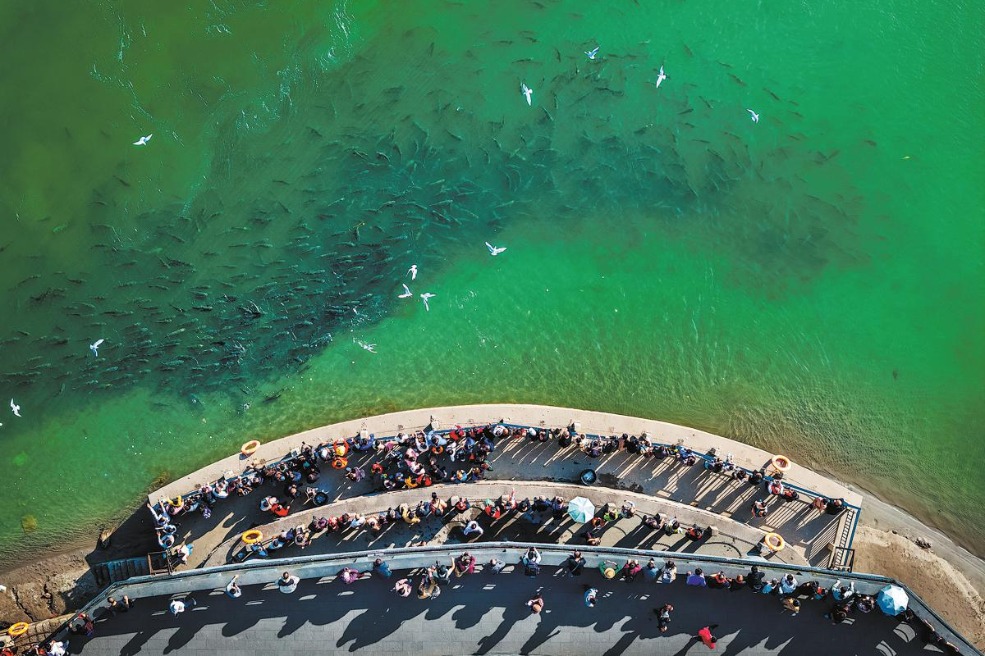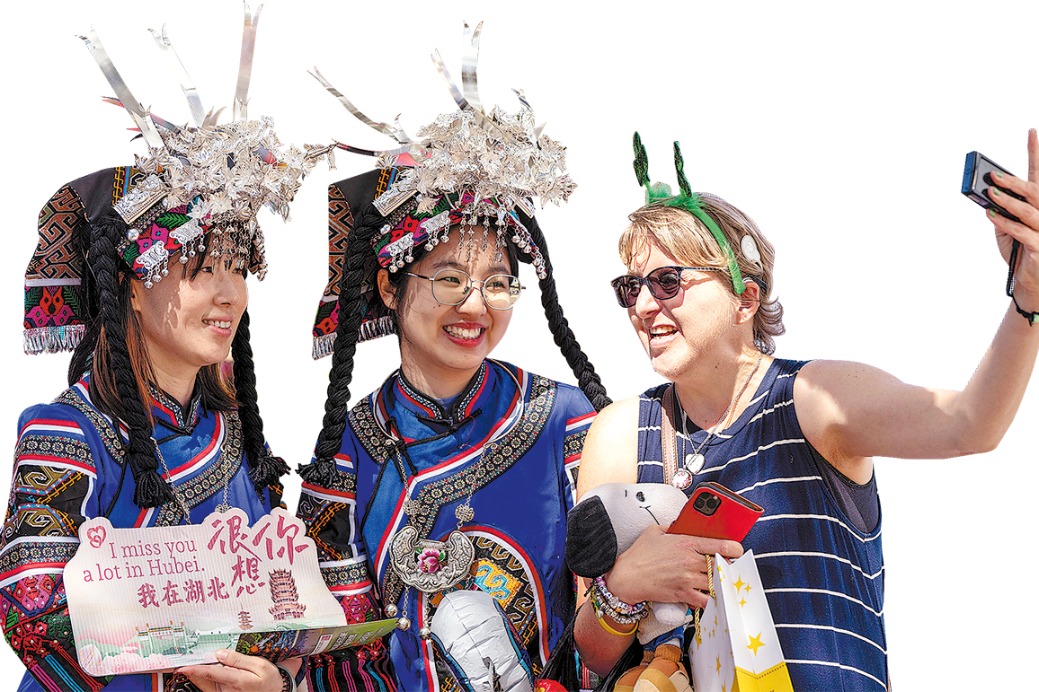Urban travelers seek pastoral peace


'Cloud houses'
Yurts are traditional portable dwellings of pastoral Mongolian tribes. It takes a few hours to assemble or disassemble them, and they are traditionally made with a collapsible wooden lattice framework covered in felt or other fabrics. A round skylight serves as lighting and ventilation, offering warmth and protection against the harsh climate and changing weather.
In Qahar Right Wing Rear Banner, I met Tunreg, an intangible cultural heritage inheritor who has been integrating modern concepts and technology into traditional yurt manufacturing. His pasture sits next to the over-350-year-old Tibetan Buddhist Agui Temple.
During a tour of his workshop, he showed me various frame parts made of imported Mongolian Scots pinewood, some inscribed with auspicious patterns. These irregular-shaped components, made with computer numerical control tools and assembled largely with sunmao (mortise-and-tenon) joints, are used to construct yurts as large as 16 meters in diameter.
An art major graduate, Tunreg developed elevated yurts he calls "cloud houses", which look like triple-conjoined white yurts that appear to be "floating on the grassland".These structures feature separate rooms and modern bathroom facilities, enhanced thermal insulation materials, and solar panels on top.
He also transformed zuoluozi, a type of conical dwelling of hunting ethnic groups such as the Ewenki and Oroqen that inhabit northeastern China. While preserving the traditional style, Tunreg has converted zuoluozi into two floors to accommodate guests.
His inventions have been adopted by some tourist spots and guesthouses in the Inner Mongolia autonomous region, as well as exported to Mongolia.
Tunreg led me through these traditional and modernized yurts while introducing the Mongolian nomadic culture, one that reveres nature and values courtesy.
He said the Mongolians in particular cherish two kinds of skins for daily life — animal hides and birchbark. He showed me cowhide horsewhips with intricate weaving and birchbark artworks he created, for which he kept the original mosses as adornments.
I was impressed by the nomads' self-sufficient lifestyle, which enables them to procure food, shelter, clothing and transportation through their strength and wisdom. He says that during migration, Mongolian nomads developed a tradition of embracing diverse influences to enrich themselves.
Even though few maintain a nomadic lifestyle in modern times, Tunreg is promoting the authentic culture to urban audiences through creative souvenirs, study tours, and cultural experience events.
The inheritor says that a flourishing tourism industry ultimately hinges on interpreting and preserving traditional culture as a solid foundation upon which innovation can thrive and market potential is nurtured.
Yuan Hui contributed to this story.
























